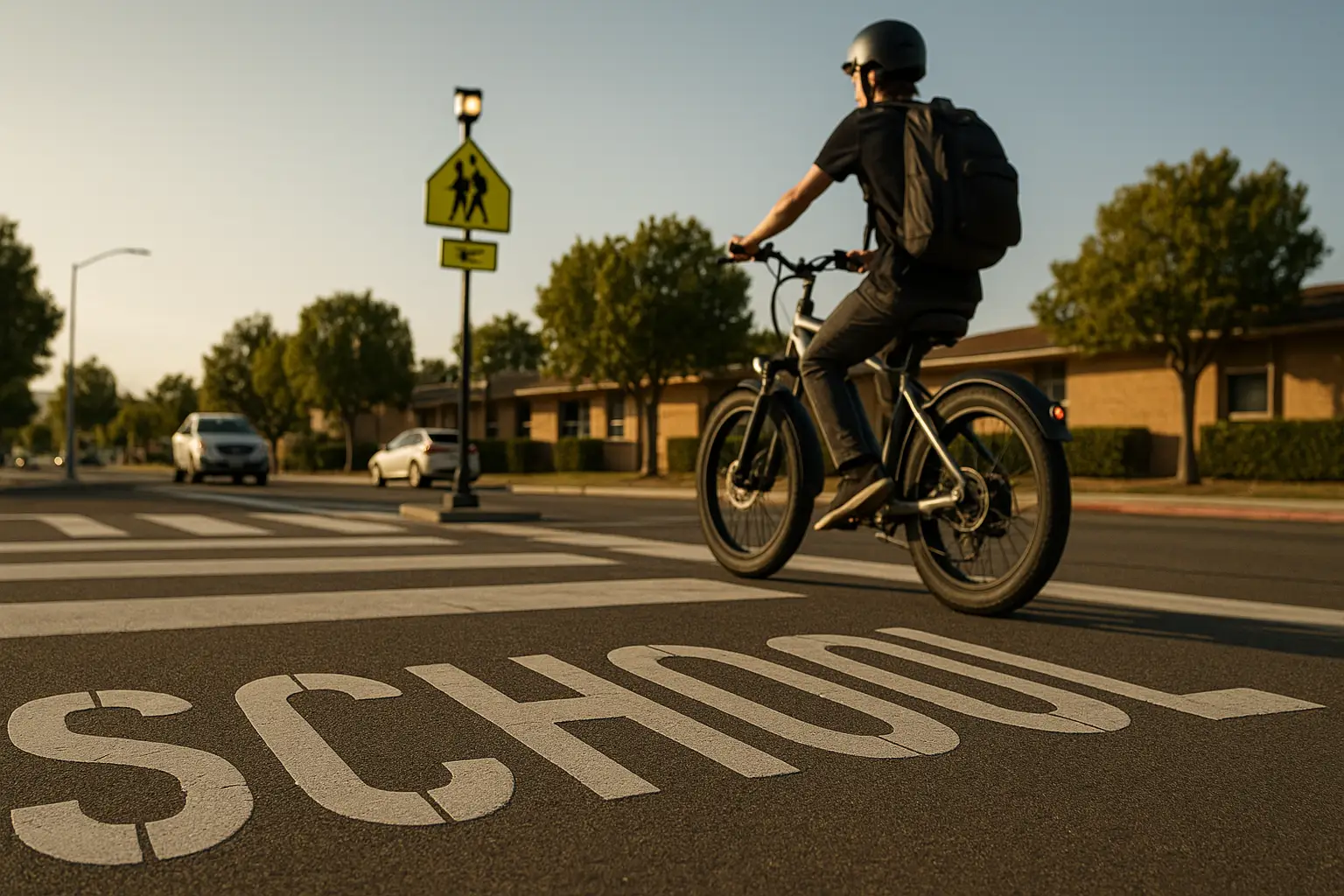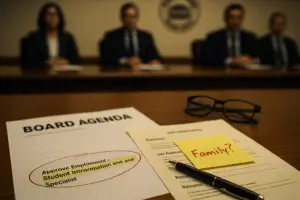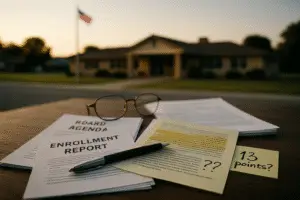SANTEE, Calf.—If you live in Santee, you’ve seen the posts: helmetless kids weaving through traffic after school; near-misses outside campuses; drivers slamming brakes on Magnolia and Mission Gorge. In mom groups and neighborhood pages, the thread is the same—this isn’t about scolding kids; it’s about the adults who set the rules.
The same theme landed in Council chambers during non-agenda public comment on August 13, 2025, when resident Carl Constantino urged the city to take up youth e-bike and e-scooter safety—training, rules of the road, and a higher minimum age—”before some kid gets killed.” Mayor John Minto immediately pressed staff: “Have we talked about that? Aren’t we working on something?” Staff replied they were not working on anything new they could recall. Minto then said, “Okay, well, we’ll talk about that.”
Read together, the mayor’s status check and closing line function as a directional signal to bring the topic back—whether via a study session, COMPOC referral, or draft options memo.
If that on-record cue is real, expect one of these to show up soon: a study session on the agenda, a COMPOC referral, or a City Attorney/Staff options memo requesting direction.
Additionally, the civic calendar suggests the concern isn’t theoretical. The city’s Community Oriented Policing Committee agenized a Sheriff’s E-Bike presentation on July 14, 2025, and the City hosted an E-Bike Safety Workshop with the Sheriff’s Santee Station in June—events promoted by the school district, too. Those are signals from inside City Hall that the problem is on their radar. What’s missing is policy.
The new lever Santee didn’t have before—and does now
In 2025, Sacramento created a San Diego-only pilot: AB 2234 authorizes cities in this county (and the County itself) to adopt local ordinances that prohibit anyone under 12 from operating Class 1 or 2 e-bikes—and to enforce with either a modest fine or a safety class. The authority runs through January 1, 2029. Translation: Santee no longer has to wait for a statewide fix. The tool exists; the clock is ticking.
Other jurisdictions aren’t waiting. Chula Vista just passed its Electric Micromobility Vehicle Ordinance: no under-12 on Class 1/2 e-bikes, clarified sidewalk/speed rules, and an education ramp before citations bite. It’s a real template, next door, under the same state pilot.
Why age keeps coming up (and it’s not “panic”)
After a 15-year-old was killed riding an e-bike in Encinitas in 2023, the city declared a local emergency and poured money into safety work. It wasn’t about optics; it was about a kid who didn’t make it home.
Zoom out: doctors and trauma teams have watched pediatric e-bike injuries surge. A statewide analysis of CHP’s SWITRS database found e-bike injury collisions increased 18.6-fold from 2018 to 2023, with more severe injuries on average than pedal-bike crashes. Children’s hospitals in Southern California report that the orthopedic severity for kids on e-bikes can mirror car-crash trauma. Those are not Facebook vibes; those are clinical charts.
And on minimum age, the medical guidance is blunt. The American Academy of Pediatrics has repeatedly advised that kids under 16 shouldn’t operate motorized scooters (and applies the same caution to high-speed micromobility). That’s one reason some governments are pushing age up—Marin County recently set under-16 restrictions for certain throttle e-bikes in unincorporated areas. If Santee lands at 14+ with training and helmets, it’s still below AAP’s line, but meaningfully safer than allowing 11- and 12-year-olds on 20-mph machines.
This is already a Santee community story
The city’s own calendar shows a push to educate families (workshops with the Sheriff’s), and the school district amplified the call for parents and kids to attend. That’s the ground game you expect before an ordinance—awareness, then rules, then enforcement. But families are asking a fair question: if we can organize events and presentations, why can’t we also set a clear, local line on age and training so parents know what’s expected before the next near-miss becomes a 911 call?
What we’re putting to City Hall (and why)
We’ve sent formal questions to the City Manager, City Attorney, and Sheriff’s Santee Station: Has staff been directed to agendize a study session or bring forward an ordinance under AB 2234? Will Santee consider 14 as a local minimum for Class 1/2 devices and pair it with education-first enforcement (a safety class that can dismiss a first citation)? Who owns the work, what’s the timeline, and where are the hotspots near schools? We also requested three years of collision and citation data broken out by age bands, helmet use, violation, location, and school-zone proximity.
That’s not busywork. It’s the only way to move this conversation out of the social media-group echo chamber and into measurable change—so parents, riders, and drivers are all playing from the same rulebook.
What action would look like on the street
A Santee ordinance doesn’t have to reinvent the wheel. The pilot law already envisions education-first enforcement; Chula Vista has a working model; Encinitas showed how quickly infrastructure and enforcement can ramp when the city makes it a priority. For Santee, that would likely mean: a local minimum age (the public debate is 12 vs. 14), mandatory helmets for minors, required lights/reflectors at night, a short safety course delivered with schools/bike shops/Sheriff that can wipe a first citation, and targeted fixes at school-adjacent conflict points. Each of those elements already exists somewhere in the region; the question is where is the City of Santee in this process, and when can the community expect to see changes.
Have experiences with E-bike safety issues? Suggestions, tips?




